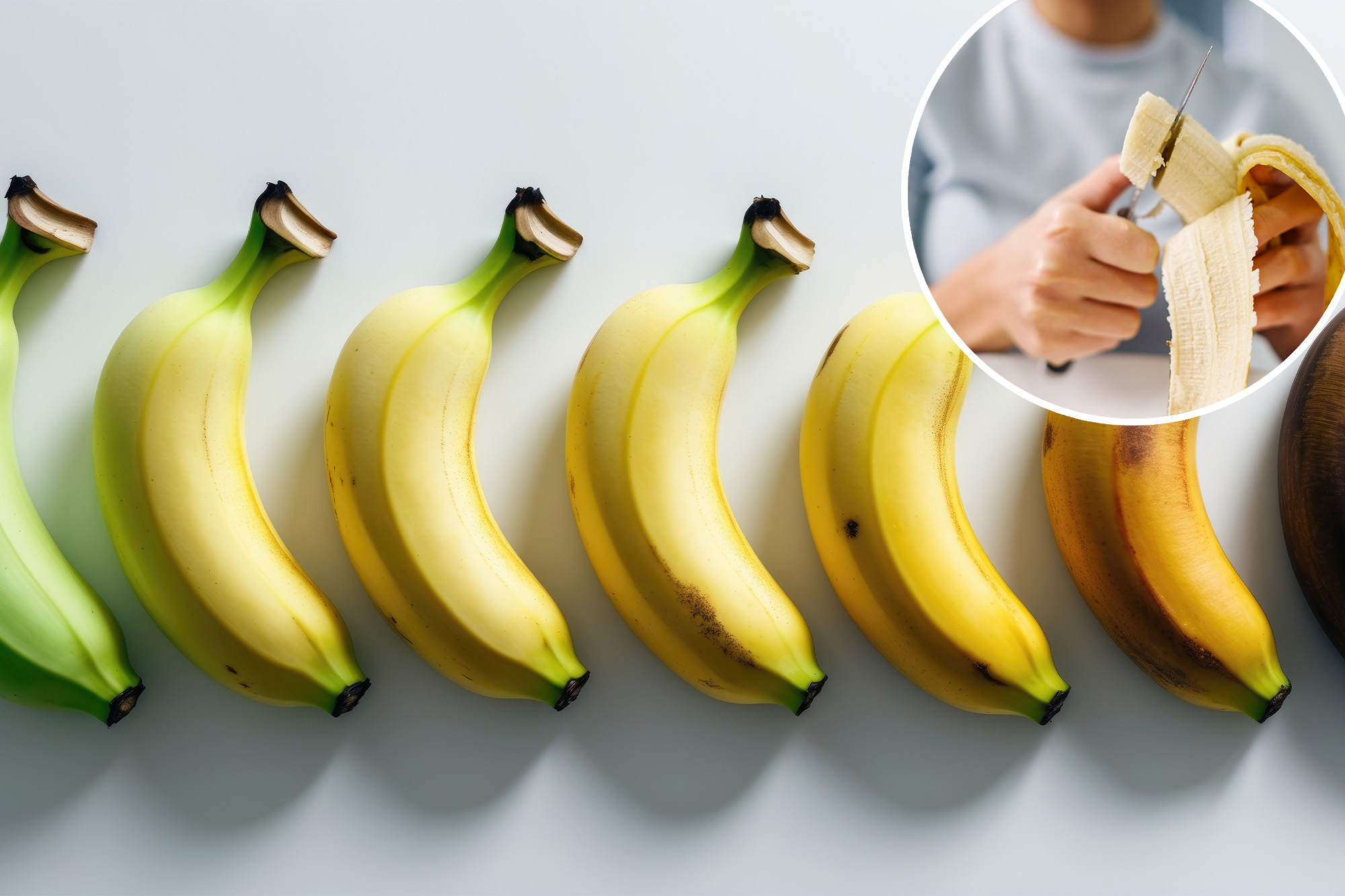
You had me yellow.
Americans, on average, eat nearly 27 pounds of fresh bananas every year, making the elongated berries the coolest fruits consumed in the US
There are many reasons to go bananas for bananas – they are an excellent source of potassium, which helps regulate blood pressure, they contain fiber, which helps in digestion, and they boast the natural carbohydrates that the body uses for energy.
But not all bananas are equal nutrients. They go through seven stages of maturity – from solid to yellow green with brown spots.
Here’s a look at the health benefits of each stage. Some may say that this change is banana.
Rigid green
“Green bananas contain a relatively high amount of resistant starch,” said Stephanie Schiff, a nutritionist registered dietitian at Northwell Huntington Hospital for Post.
“This is a type of fiber that takes longer for the body to digest and does not ignite blood sugar as fast or severe that it would be a mature banana.”
Resistant starch travels to the big intestine, where intestinal bacteria ferment it. Fatty acids that result in short chains can help balance the intestinal microbioma and reduce inflammation.
Because they are rich in fiber and resistant starch, green bananas help control hunger.
“The greener the banana, the better for your health,” Schiff said. “But it will taste more bitter and grain, so I don’t eat them when they are completely green.”
Green with yellow traces
As the bananas ripen, the green chlorophyll pigment breaks down, leaving the yellow xanthophyll pigments to become more visible.
Banana starch is also transformed into simple sugars, making it the sweetest taste.
UK surgeon Karan Rangarajan, also known as Dr. Karan Rajan, described the banana barely mature in Phase 2 as a “balanced king” due to its high levels of fibers and sugar.
“You also get a slight increase in potassium as more they become bio available due to the resistance of fiber and resistant starch,” he said in a February tick. “Perfect for those who are afraid of commitment, but they want some intestinal health and a sweetness.”
More green than yellow
“I prefer a less mature banana that is painted with a lot of green,” Schiff said. “This is what I recommend to my patients with diabetes.”
Schiff noted that ripe bananas are easier to digest than immature ones because turning starch into simple sugars makes sugars available for absorption and use.
More yellow than green
Yellow and green bananas are rich in potassium, vitamin B6 and vitamin A.
Green bananas tend to have more folates, which plays a crucial role in DNA synthesis and repair.
Yellow bananas “contain higher levels of antioxidants, vitamin C and sugars,” said New Jersey Chiropractor Suzi Schulman on Instagram this month.
The baking process leads to an increase in antioxidants, including catechins, which have been associated with heart health and lower inflammation.
Yellow with green tips
The Fruitguys, a California -based company that gives fruit in offices and home, calls Phase 5 “the perfect phase”.
“At this stage, the bananas are quite bold for transportation, however it will mature within two days in a full yellow,” Fruitguys wrote in a post last year.
Phase 5 bananas make an excellent pre -training snack due to energy balance and fiber.
Completely yellow
Yellow tongues are now completely ripe.
“Completely mature bananas are loaded with antioxidants and fibers, increasing your immune system and digestion,” the company Superfood Blends Organifi recently posted. “They are of course sweet, easy to digest and perfect for smoothies or baked products.”
Brown -stained
Brown in your banana should not make you cloudy.
Brown spots – known as “freckles Sugar” – represent high levels of catechin.
“Excessive bananas (brown) are sweetest and more easily soluble, and while nutrient levels can fall slightly, they are still a good source of energy and potassium,” Schulman said.
#healthier #banana #nutritional #stage
Image Source : nypost.com